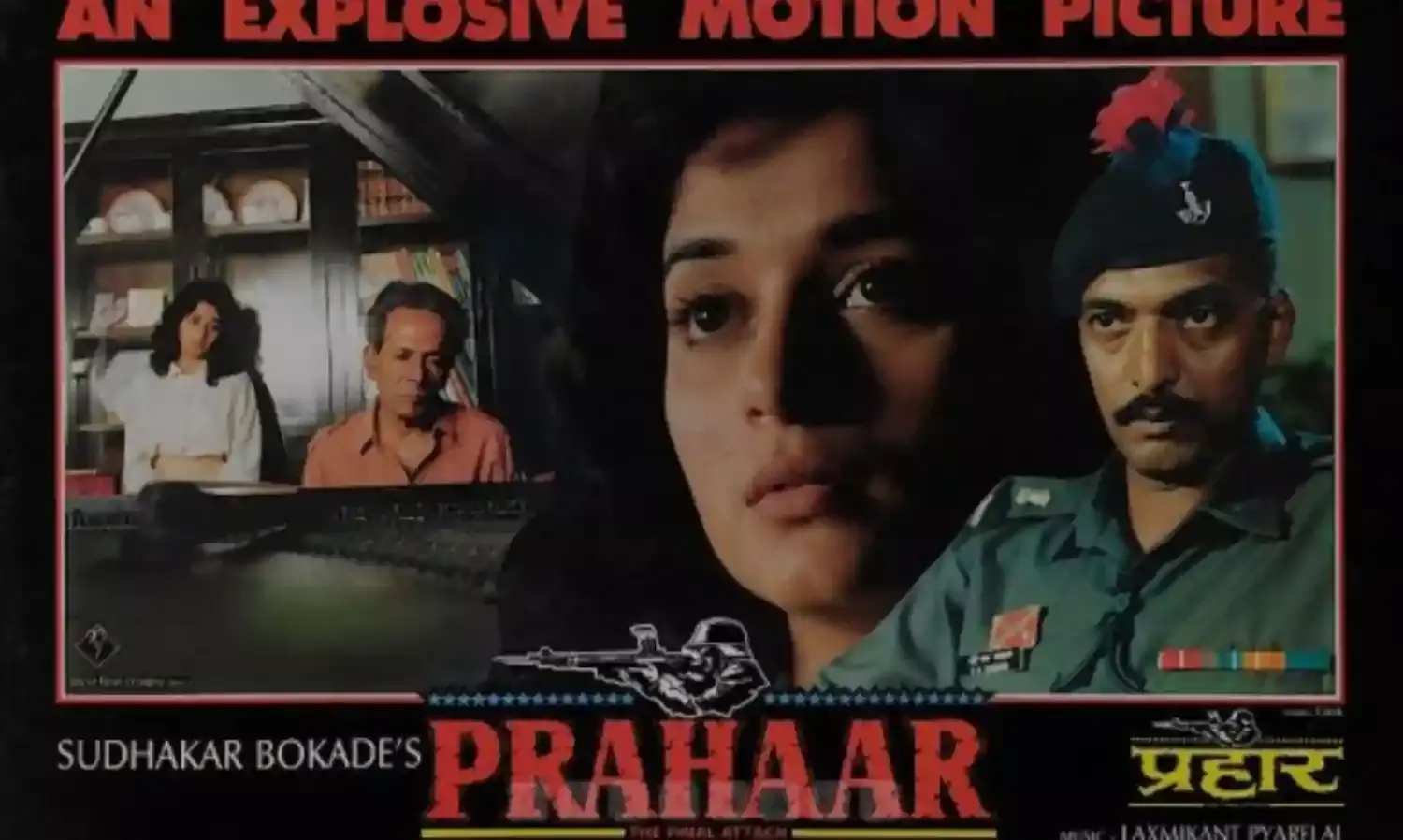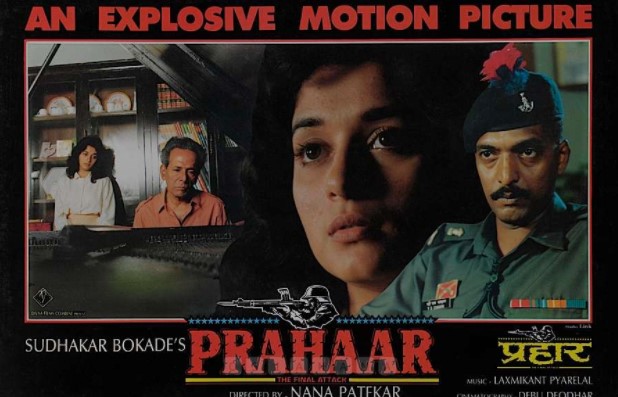C’mon Kill Me! 30 years of Prahaar
Probably the best Indian army movie ever, Prahaar ages along with the millennials

It is not very often that realist cinema gets to taste commercial success. When it does, it is for very good reasons. Nana Patekar’s directorial debut Prahaar (1991) is one such movie. Major Chauhan (Nana) is a highly trained officer of the Indian army who diligently serves his country in the field. But when things go wrong he takes a lone stand against corruption inside the country. A gut-wrenching movie of high caliber craft, Prahaar: The Final Attack has at its heart the harshness and agony of the world profane, with concluding instructions for millennial India.
We know that the millennial India has belief in its own agency to bring change, and is therefore highly expressive. Numbering more than 440 million, Indian millennials are without any doubt the largest millennial cluster on the planet and inhabit many social dynamics. And so, Peter D’Souza lives in a small corner of an Indian metropolis. He is an idealist and an honest young man who is against his father giving hafta money to local goons, and who wants to serve his country by joining the army. He enlists in the Maratha Light Infantry Division, and soon undergoes vigorous training under the command of Major Chauhan.
The screenplay is by Hriday Lani and Nana, and the dialogue by Sujit Sen. Right before their vigorous training is about to begin a cadet describes Major Chauhan – He is a pain.. and you know where. To this another responds – Tu kaunsa yahan bahut aas lekar aaya hai? Everyone laughs. This is Prahaar, one of those films that kept alive the summer afternoons on Doordarshan – “Commando ka eik hi motto: Mushkil waqt, commando saqt…”
Today, a strong sense of individuality, a liquefied sense of identity and a more dynamic range of priorities mark the millennials of India. There is a prominent sense of entitlement. A specious lack of interest in approaching goals in a linear fashion that surprises the older generation. In Prahaar this is expressed when Peter decides to first join commando training and then decides to leave due to harsh treatment by the major Chauhan, but finally decides to stay put and become a commando. This becomes a fatal incident in the movie – something the older generation could not wish away then, and cannot now. After the training, Peter and a group of commandos are given a critical operation to rescue a hijacked school bus. The commandos are flawless in the rescue of the passengers in the tactical mission, except Peter is hit and loses his legs forever.
Prahaar is studded with four musical gems by Laxmikant-Pyarelal. The last track is the background of the film’s B Story, which makes for the childhood of Major Chauhan and the loss of his mother to the flesh industry. The depth which Nana Patekar brings to the character is extraordinary. It is truly a movie that has come from him.
How the story turns to a heart wrenching calamity is masterly. Soon Peter is honorably discharged from the military, and decides to help his father run the bakery. Peter’s father tells Major Chauhan he is happy that at least his son will stay close to him now. Then Major Chauhan receives an invitation to attend the marriage of Peter with his long-time girlfriend, Shirley (Madhuri Dixit), which Chauhan is happy to accept.
In one of the best scenes ever, Major Chauhan reaches Peter’s house. There is celebratory lighting, but no one is around. When he knocks, a woman opens the door partially. He asks for Peter. She tells him – Peter marr gaya. then shuts the door. The audience is shocked to find out that Peter was killed by goons whom Peter had refused hafta payment. Another masterful scene is when Peter’s father (Habib Tanvir) slaps Major Chauhan.
Chauhan is back in the same world which had snatched his mother from him. Chauhan finds out that the local police are corrupt and unable to confront the gangster problem. So Chauhan decides to avenge Peter's death, realizing the unbeatable immensity of the corrosion, yet unable to stop himself.
Prahaar is a movie that manages to provoke patriotism without jingoism and bravely predicts that millennials could be the unluckiest generation of all time. When new policies and cultural issues are discussed in the elected councils of India, lawmakers, journalists and experts largely neglect the millions of young Indians who live in villages and small cities and who have low access economic betterment. The quality of their education and their opinions on cultural issues, their political hopes, and whether they find quality employment will define India for the 21st Century. The movie grasps the angst of this generation point blank in Shirley’s pot smoking brother (Makrand Deshpande) when he responds to his father – maine kya paida hone ki application dali thi?
Both Dimple Kapadia and Madhuri Dixit deliver first class performances. While the movie is outdated on trans-rights and has a slight dash of Muslim-phobia, it stands strongly against misogyny.
Now Nana Patekar is no match for Mumbai, which is a breaker of dreams in this story. Fight after fight Chauhan declares – C’mon Kill Me! in a city inhabited by mannequins and inner enemies, which Major Chauhan describes in the court after killing the goons who killed Peter and were harassing Dimple Kapadia.
When the court lets off Major Chauhan, it is on the pretext that he has lost his mind and will be spending time in a mental asylum until he is better. This is the other big challenge that Indian millennials face, that of mental health. A surprisingly large number of millennials struggle in ecosystems that expect them to deliver while the world watch.
The climax of Prahaar sums this up distinctively as major Chauhan imagines hundreds of young Indians running naked, running along to train themselves for a new birth, as a new nation, a new people.
Ali Kirmani is a film scenarist




